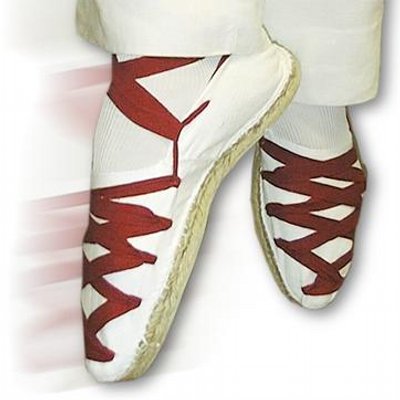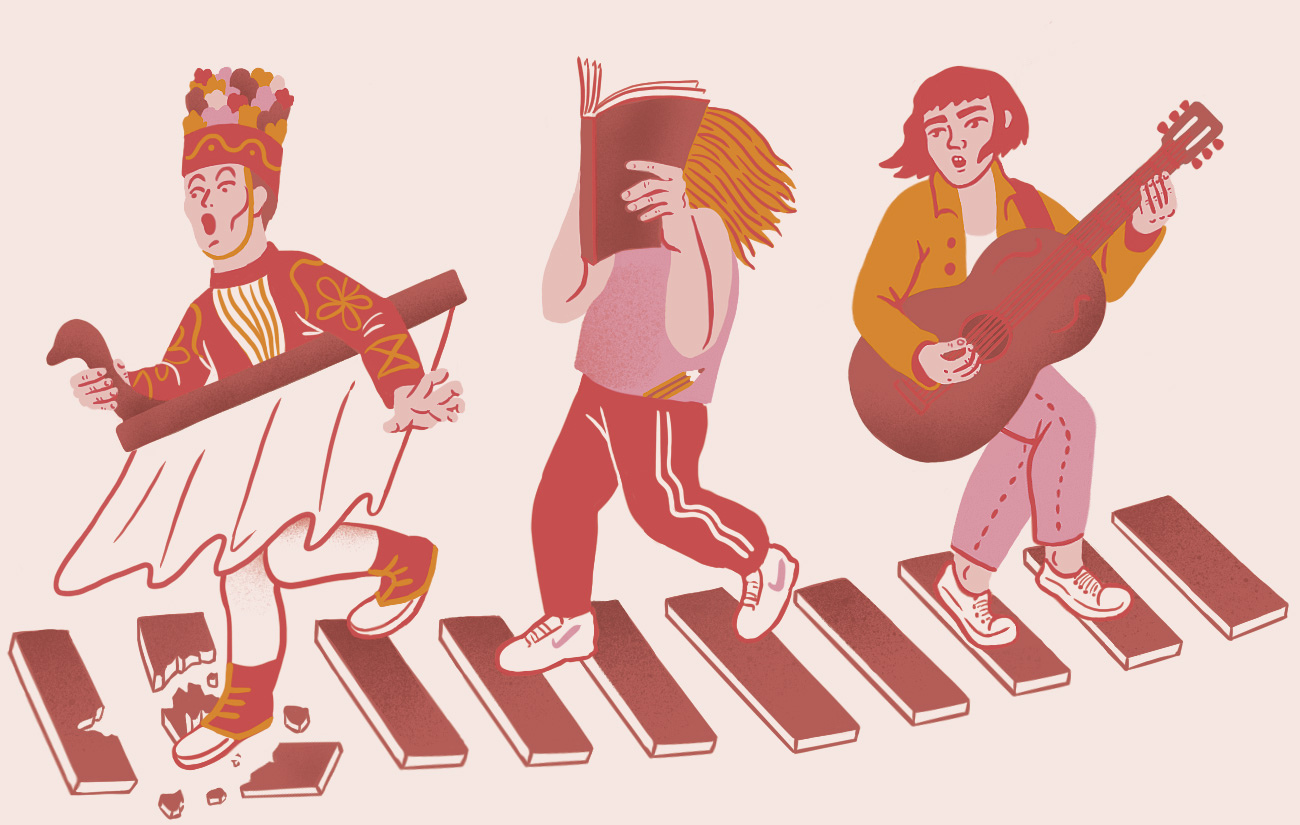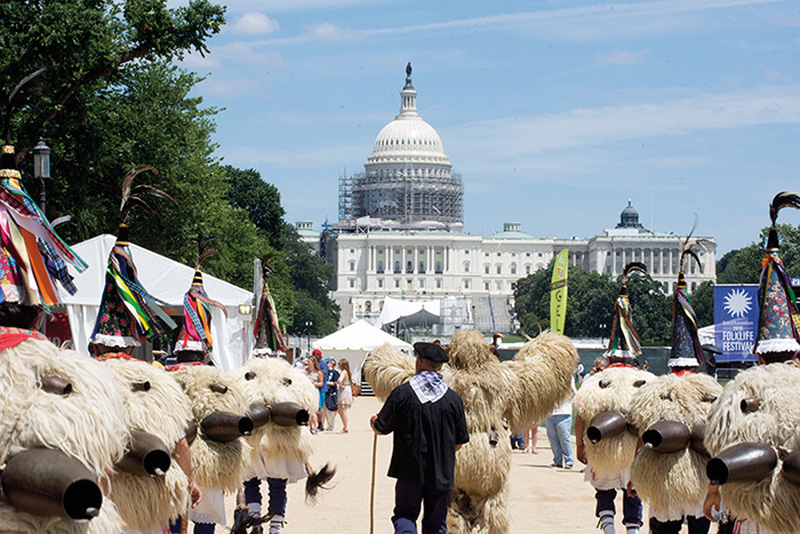Iñaki Ahedo and Xabier González: "It's been interesting to think about whether some external ideas are important here."
- It is the stamp of a postcard sent by an Estonian friend to Iñaki Ahedo. Starting point of the exhibition. Since 1995 he is collecting stamps and in 2019 he created the possibility of teaching them to the public through the exhibition organized by the dance group Eusko Lorak. Iñaki Ahedo and Xabier González are the members of the group and have given us explanations about the exhibition of stamps that can be seen these days in Vitoria-Gasteiz. The sample brings together about 1000 stamps with images of carnivals, swords dances and dances.

Where did folklore start? exposure?
In the Eusko Lorak society we have a small experience in the organization of exhibitions, the penultimate under the title "Headed off". It seems to us to be an effective way of bringing some content to people, despite the enormous task it entails. Two years ago, the stars lined up to organize what we have in our hands, and we got our hands on it.
In 2019 it was presented in Sestao, in September and October it has been in Zigoitia, and now the exhibition is in Vitoria-Gasteiz. A travelling exhibition?
Our first intention, of course, was to do well at Sestao, because we played at home. Seeing that the exhibition was well received, we were encouraged to try to move. We had two or three concerted places, but the pandemic came and everything was canceled. We started moving again since the summer, and the first two stops were Zigoitia and Vitoria-Gasteiz with Arabako Dantzarien Biltzarra. If you allow us to do some advertising, we'll say that the exhibition is very versatile, very exempt, it doesn't need walls.
Iñaki, it's a job you've started, right? How did you shape it? Tell me a little bit about how the process has been.
Yes, I was already working to meet. I recall that in 1995 the first seal I retained was attached to the letter of an Estonian friend. At first I started meeting mostly on design, because at the time I had just been interested in graphic design, but over time I realized that I was learning other interesting things about folklore through some stamps. And the fact that in Juan Antonio Urbeltz's book "Basque dance, approach to symbols" was used as an illustration the British label "Medieval mummers" made me think that it might not be a bad idea to show the stamps. I proposed the idea to the partnership and I was rushed to assent. And then the questions arose: what and how.
Shouldn't a selection be made?
We had enough stamps and too many, but which of them depended on the way exposed. We're not experts in philately, and we've never been in a conventional stamp exposition, but we suspected that that didn't fit what we wanted. The stamps count a lot for themselves, but we were pretty clear that we weren't going to show them to teach them, that we needed a thread. On the other hand, we wanted to follow Jorge Wagensberg's ideas. He believed that an exhibition should stimulate visitors, create a difference between the former and the later of the visit, that in a good exhibition you have to have many more questions than when you enter, that cause the curiosity of the visitors to move from indifference to wanting to know more.
The exhibition was attended by Juan Antonio Urbeltz, what did he bring?
When we were looking for the wire, we knocked at Juan Antonio's door. We intended to include some of the issues that I had worked on, such as la c?lu?, morris dances, carnivals... And we asked him if he could give us any idea to shape the exhibition. The first stamps we showed him were only from Poland, and he asked us if we had seen the movie "Cold War." Yes, we just saw it, and we don't know if it was specific, but the movie gave us the final clue. Later, he oversaw and approved the texts of the four modules based on his books.
What will the visitor find with?
In short, fourteen stories and stories with almost a thousand stamps that help illustrate them. Also with a few more things, and in five of the fourteen modules you can see videos.
What can be especially interesting for a dance enthusiast?
We think a lot of interesting things can happen to you. To quote someone, we have at least been interested in thinking about whether some external ideas are important here, such as the houses of Hungarian dance or the days of Estonian dancer.
In such small things, you can get a lot of information, right?
Yes. From the design point of view, some seals have a surprising level of detail, especially when using the feeder technique. As for the content, there is nothing to say. By way of example, in a series of 1991 Soviet Union stamps, something traditional appeared for each republic. We had already seen many dance groups in Georgia, but what appeared there was something strange to us. Fortunately, the label contained few words, both in Russian and in Georgian. We asked for help in deciphering some of our Georgian friends, and so we learned about Berikaoba, the local carnival. And because it couldn't be otherwise, we had to dedicate a module to it.
They first introduced it as "folklore on seals," but now "Non nora folklorea?" Didn't you name him? Why?
The advice is due to Iñaki Arrangi. When he visited the exhibition he told us that, in his opinion, the name "Folklore on Stamps" was very clear and that the label would not scare some people, although the exhibition had more interesting or more interesting things than stamps. We loved buying the advice from Iñaki and changing the name.
Folklore Exhibition in Vitoria-Gasteiz
Where: Vitoria-Gasteiz, Exhibition Room of the Hegoalde Civic Center (C/ Alberto Schommer, 10 01006 Vitoria-Gasteiz).
When: From 30 October to 27 November
Schedule: Every day from 8:30 to 21:30.
Start of the summer. EHZ festival hangover (atx, headache). You want to breathe after a charged course. Flush the head. Reconnect key elements. Take some time with family, see old friends again and rest (a little) in the daily struggle. Really? !...
As a family, walk to the... [+]
The pintxos of many bars in the Old Part of Donostiarra come to serve in a van with permission to access the old part of Donostia. In the other bars, to eat the potato tortilla pintxo they prepare, you have to queue and take the turn when the morning van enters the old town. A... [+]
If you're a musical follower, Rodrigo Cuevas will sound to you. She has been invited in our lands during the Bilbao Big Week, in the recently completed Atlantikaldia in the Enmusikadas and Orereta de Pamplona, and the Pilgrimage has sung and danced the turn to her large fan... [+]
Herri musikari eskaini dio bizitza osoa Juan Mari Beltranek (Donostia, 1947); biltzen, sortzen eta zabaltzen. Haurtzaroan, Etxarri Aranatzen, heldu zien lehenengo musika tresnei eta familiarekin Donostiara mugituta hasi zen han eta hemen txistua astintzen. Dantza taldeetan... [+]
Euskal herri kulturari ekarpen handia egin zion Gurutzi Arregi Azpeitia (Lemoa 1936, Zornotza 2020) etnografoa asteazken goizaldean hil da 84 urterekin. Besteak beste, Euskal Herriko Atlas Etnografikoaren koordinatzaile izan zen. Durangoko kultur mugimenduetan ere... [+]
The French Ministry of Culture will test the Pass Culture device in five departments: It is aimed at 10,000 people aged 18, and has a virtual endowment of 500 euros each, which can use for a year, consume culture and through an application in exhibitions, cinema tickets, books... [+]
Orain hamar urte Euskal Herrian ez zen Halloween ia-ospatzen. Domu Santu eguna bai, Arimen gaua toki gutxi batzuetan ere bai. Baina Halloween filmeetako eta telebistako kontu amerikarra zelakoan lasai egiten genuen lo Domu Santu Egunaren inguruan. 2007ko urrian Bilbon,... [+]
The powerful Smithsonian Foundation has dedicated the Basque Culture to the great folkloric festival in Washington, which this year celebrates its 25th anniversary. The debate has been whether the Basque representation has been too folkloric or just the opposite, whether it has... [+]
Asteazkenean hasi zen AEBetan Smithsonian Folklife jaialdia, Euskal Autonomia Erkidegoa gonbidatu nagusien artean duela. Euskal erakundeek proiektatu duten irudiak eztabaida eragin ostean jakin da 2018an Katalunia izango dela herrialde gonbidatua.
Euskal Autonomia Erkidegoko Podemos-Ahal Dugu ez da Smithsonian Folklife Festivalean izango. Washingtonen, AEBetako hiriburuan ospatuko da jaialdia asteazkenetik aurrera, eta Jaurlaritzak eta Aldundiek gonbidatu zuten alderdi morea, gainontzeko partiduekin batera.






















